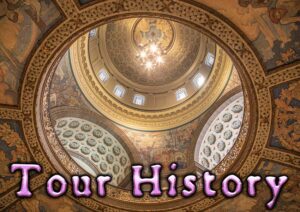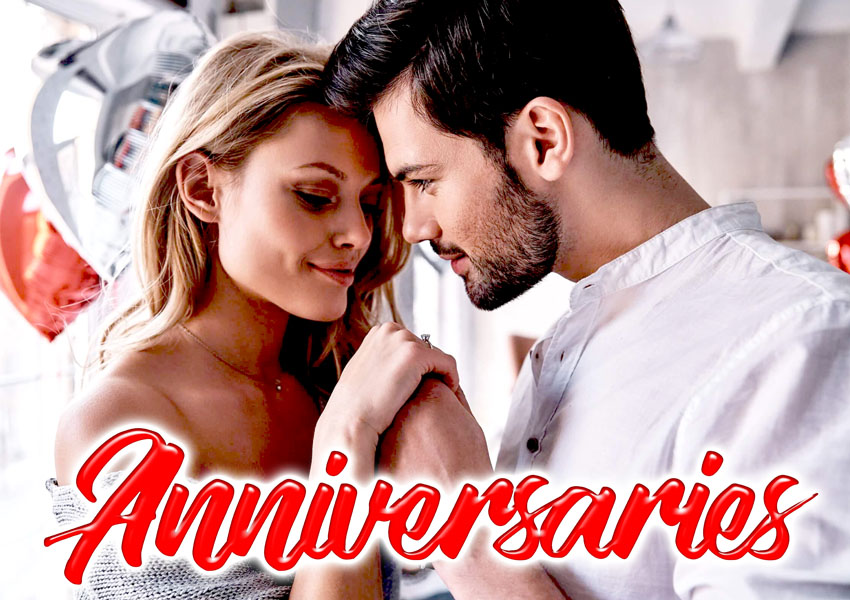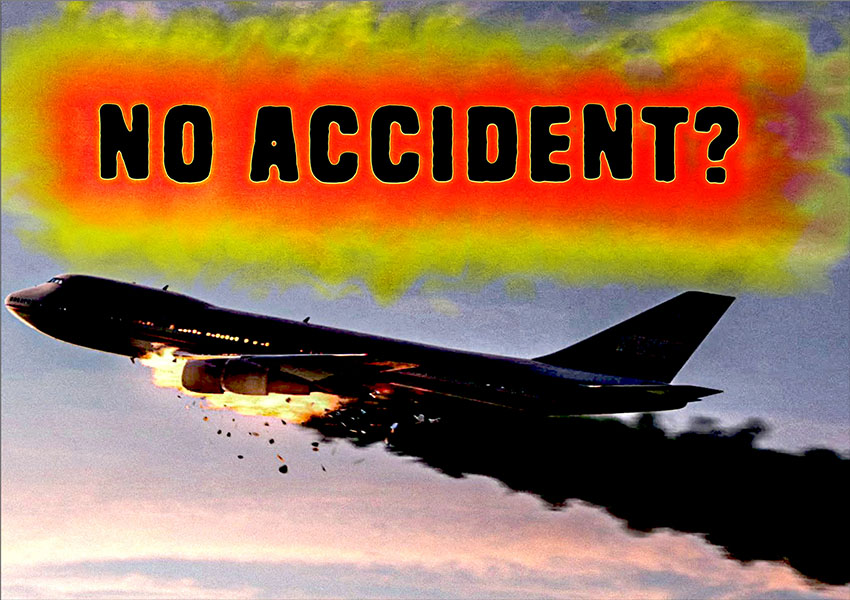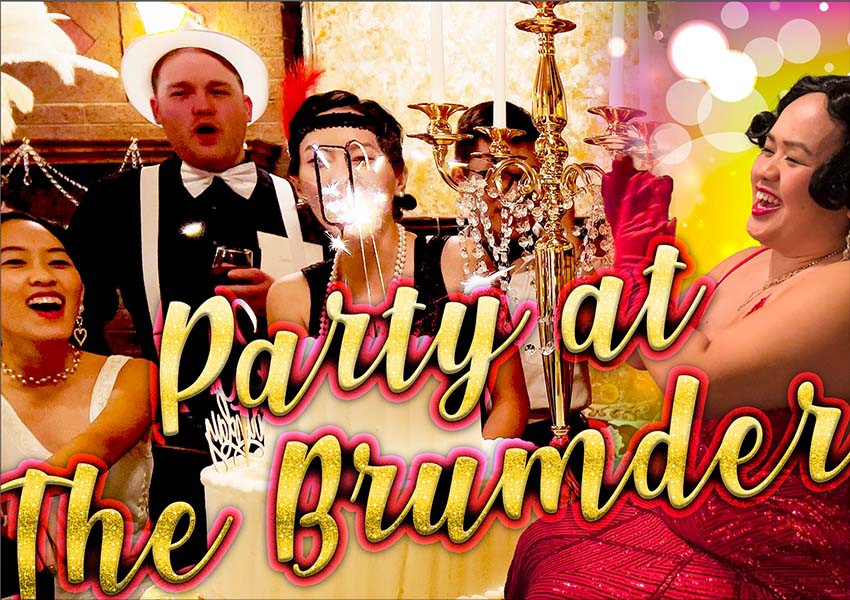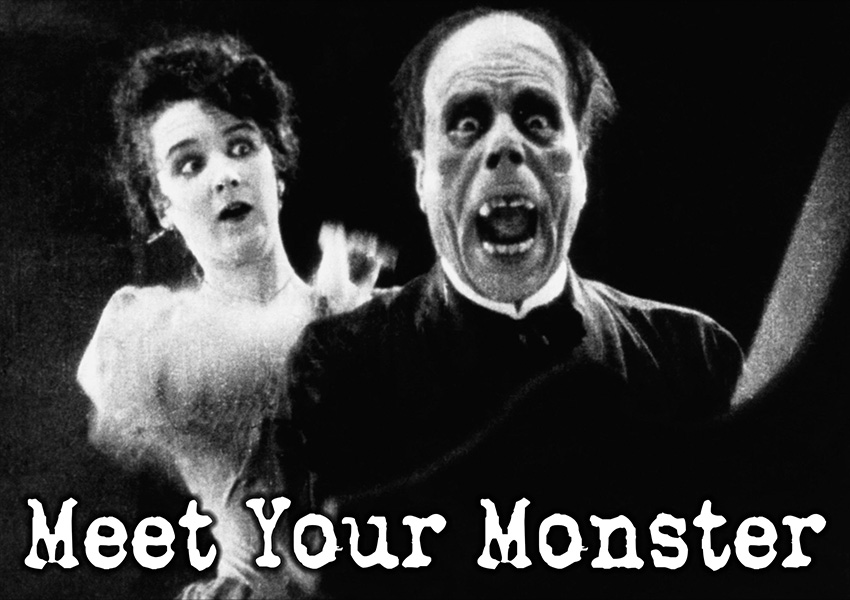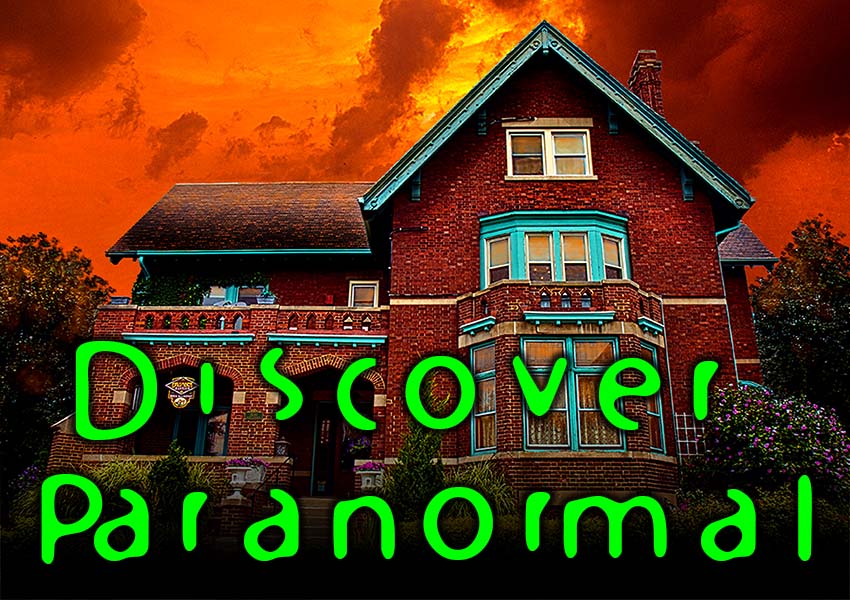Las Vegas New Mexico
Las Vegas Park Plaza
During Las Vegas’ wild and wooly past, the rowdy and the hot-tempered
would kill people who were annoying them, without many consequences at first.
When the townspeople had had enough, swift justice was done, perhaps without a trial.
Their unexpected death hasn’t been accepted by some spirits.
DESCRIPTION
Thanks to the current city leaders, citizens, and railroad folks of the past, Las Vegas Park Plaza is a beautiful, peaceful place, hosting town festivities, and social events in good weather. A perfect spot to relax and take a break, it is a much-loved public park, supported by all.
Tom and I visited old town Las Vegas during a road trip, and it was filled with people celebrating the 4th of July with picnics, and live music. Everyone was having a great time! It truly is the heartbeat of the social community.
Large trees with grassy areas, benches, and a bandstand are arranged in a pleasing manner, creating a lovely green space. Momuments of historical importance can be found in the park. The Daughters of the American Revolution placed a Santa Fe Trail Marker in the plaza in 1910.
The Las Vegas Historical Society encased a bronze plaque in a piece of petrified wood commemorating Brigadier General Stepher Watts Kearny’s peaceful entrance into the plaza in 1934. A 20mm anti-aircraft field piece dedicated to the local heroes of the Bataan Death March during the Second World War.
HISTORY
According to the National Register of Historic Places, the village of Las Vegas had its beginnings back in 1835 as a Spanish settlement. “Four residents of the Jurisdiction of San Miguel del Bado, Juan de Dios Maese, Manuel Duran, Miguel Archuleta, and Jos£ Antonio Casados, on behalf of themselves and twenty-five other landless heads of families, had petitioned the authorities of New Mexico, then a Territory of the Mexican Republic, for a land grant on the Gallinas River in the region known as the Vegas Grandes, ‘the Great Meadows.'”
“This settlement was approved by Governor Francisco Sarracino and the Territorial Deputation, and Alcalde Jose de Jesus Ulibarr. On April 6, he designated the outside boundaries of the grant, allotted farming lands to family heads and selected the site for the plaza, the traditional center of any new settlement.”
The plaza at first had a protective wall, which didn’t endure as it wasn’t mentioned by early travelers. Its humble beginnings were noted its early visitors and the military.
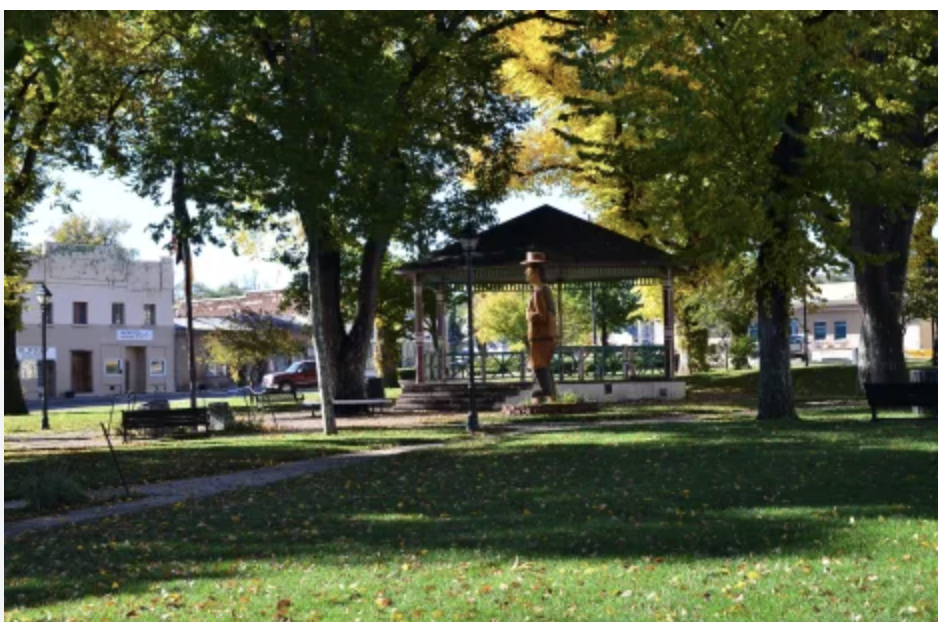 “A well was dug in the center of the plaza, later supplemented by an acequia which brought water to the southwest area of the plaza from the hills to the west. This ditch became the acequia madre or main irrigation ditch which flowed west around the plaza then ran south for the use of farming land before emptying into the Gallinas River.” (NRHP)
“A well was dug in the center of the plaza, later supplemented by an acequia which brought water to the southwest area of the plaza from the hills to the west. This ditch became the acequia madre or main irrigation ditch which flowed west around the plaza then ran south for the use of farming land before emptying into the Gallinas River.” (NRHP)
During the 1850s, the well was surrounded by a low wooden wall. Later, a high platform was added to support a wooden superstructure topped by a circular blade and fan assembly.
On August 15th, 1846, Las Vegas came under the jurisdiction of the U S Army as a result of the Mexican American War. An account of the peaceful entry of Brigadier General Stephen Watts Kearny by Lt. W.H. Emory gives the first specific description of the plaza area, surrounded by its typical one-story adobe structures. Kearny climbed a rickety ladder to get to the top of one adobe, the Alcalde’s house, now known as the present-day Dice Apartments.
Emory noted, “Kearny announced New Mexico a Territory of the United States, guaranteed protection to the new citizens and their property, and took the oath of allegiance from the town officials.”
Private Jacob S. Robinson, who wrote on August 14th, 1846, shared “At night we encamped at the town of La Vegas (sic) , where the houses are built of adobes, or sun-dried bricks. Each house has a little porthole at the backside… a window.”
On the same date, Private Abraham S. Robinson described the settlement as little more than “an assemblage of mud houses covering a square of fifteen acres.”
Lt. Abert recorded a similar description:
“There was a large open space in the middle of the town; the streets run north and south, east and west; the houses are built of ‘adobes.’ The roofs, have enough inclination to turn the rain, the walls…continued up one foot above the roof are pierced for this purpose.”
Trader William Kronig wrote in 1849: “Las Vegas was an adobe- built town composed of about 100 small shacks as huts placed at random. A few were built along the main traveled road and around a square.”
The site of the Imperial Saloon of the infamous Vicente Silva is situated near the center of the south block, an area once crowded with such establishments, catering to travelers, locals and bands of men with a variety of reputations that kept it pretty wild and dangerous.
In 1854, W.W.H. Davis, attorney for the Territory, wrote the following less flattering description. “Las Vegas is a dirty mud town of some seven hundred inhabitants; many of the houses were in ruins, and most of the others wore an exceedingly uncomfortable appearance. We halted our teams in the Plaza, but which more resembled a muddy field than a public square, and all sorts of four-footed domestic animals were roaming at large over it.”
However, nothing like a small pox epidemic of 1877 to change habits. The busy plaza was cleared of all livestock, and soon after all wagons and teams were disallowed from the plaza after discharging their cargoes. A few years later, after the railroad rolled into town on July 4th, 1879, stagecoaches gradually disappeared. The Las Vegas Street Railway Company offered round trip, horse-drawn trolley service around the plaza first and then to the train depot.
By 1879, the blade assembly had been removed from the superstructure above the well, and the windmill was no longer in use, but served conveniently as a hanging gallows by the Vigilantes until 1881, after people complained that hanging bodies could be seen by incoming railroad passengers, giving them a bad feeling about the town.
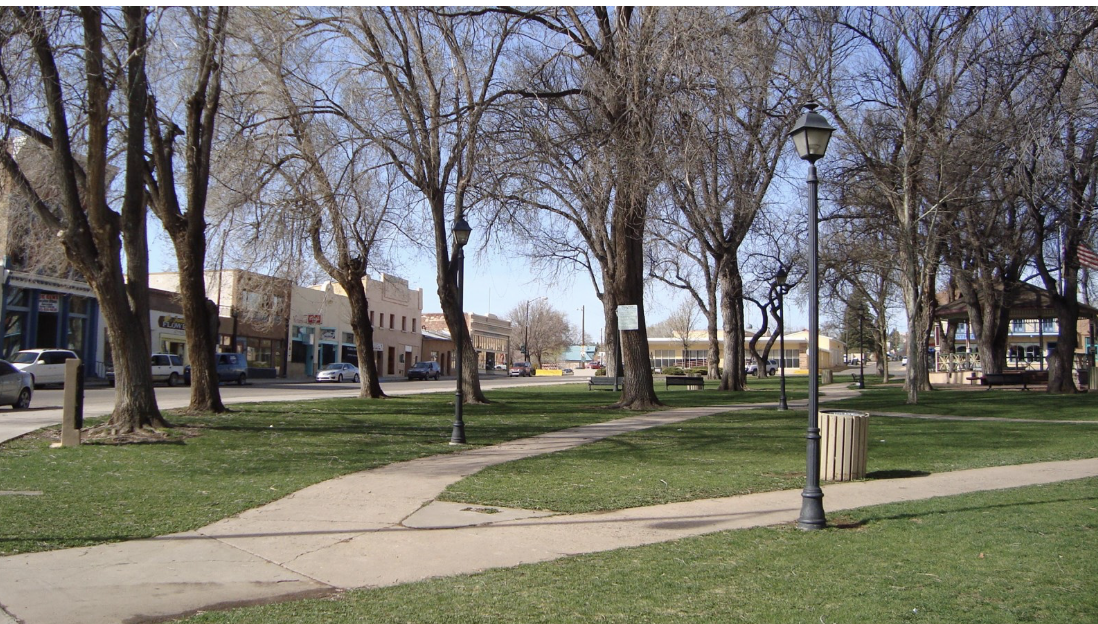 In this same year, a major facelift of the plaza area happened with the coming of rail service. The introduction of the architectural styles and building materials used in East Coast cities became a popular way to attract train travelers. The adobe buildings and the Dice Apartments on the North side of the plaza were quite the contrast to the grander buildings with the stone-cut facing, wrought iron and sculptured trim and the ornate Victorian false fronts.
In this same year, a major facelift of the plaza area happened with the coming of rail service. The introduction of the architectural styles and building materials used in East Coast cities became a popular way to attract train travelers. The adobe buildings and the Dice Apartments on the North side of the plaza were quite the contrast to the grander buildings with the stone-cut facing, wrought iron and sculptured trim and the ornate Victorian false fronts.
These include the red brick and cut-stone three story Plaza Hotel, built in 1880 at the west end of the north block, and the three-story “Great Emporium” of Charles Ilfeld built in 1882 of squared rock, enlarged and refaced in multi-colored marble in 1890. Both are of the Italian Renaissance Revival style of the 1870s. Each remained in use, one as a hotel and the other as a hardware store.
In 1881, F. 0. Kihlberg was appointed Park Commissioner. He led the citizens to create a beautiful park out of the old muddy plaza.
“After the removal of the Hanging Windmill, the well was filled in and the oval-shaped park was enclosed by a white picket fence with four gates. In 1882, one-hundred cottonwood trees secured in Puerto de Luna were planted, together with low-cut shrubbery which lined the wide, graveled main path laid from east to west over the site of the old well.” (NRHP)
“Smaller paths led to four, large circular flower beds. White street lamps were placed atop each of the four gates. Later, a utility pole with arc lights was placed in the center of the plaza, and still later, this in turn gave way to a covered, eight-sided bandstand.”
“To further enhance its upscale appearance, iron park lights were later installed and wooden-planked sidewalks built in front of the stores encircled the plaza.” (NRHP)
Through the eras, the fortunes of Las Vegas slipped downward, and the passage of time led to more practical additions. The tracks of the street railway were later torn out, and brick-paving was laid in the streets around the plaza. In 1974, asphalt was laid down on the brick paving, and the picket fence and flower beds were removed. The sidewalks were cemented and only the trees, grass and inoperative iron park lights near the bandstand remained, though it was still a beautiful site.
Las Vegas Park Plaza was added to the National Register of Historic Places on December 16th, 1974.
As of 2022, it is enjoyed by many locals as the spot to relax and spend time with family and friends.
Tired travelers and visitors love to walk through the park, enjoying its peaceful aura of this special Las Vegas landmark. The living are not the only ones finding comfort and peace here to counteract their restlessness. Spirits from its past also love this piece of calm and light.
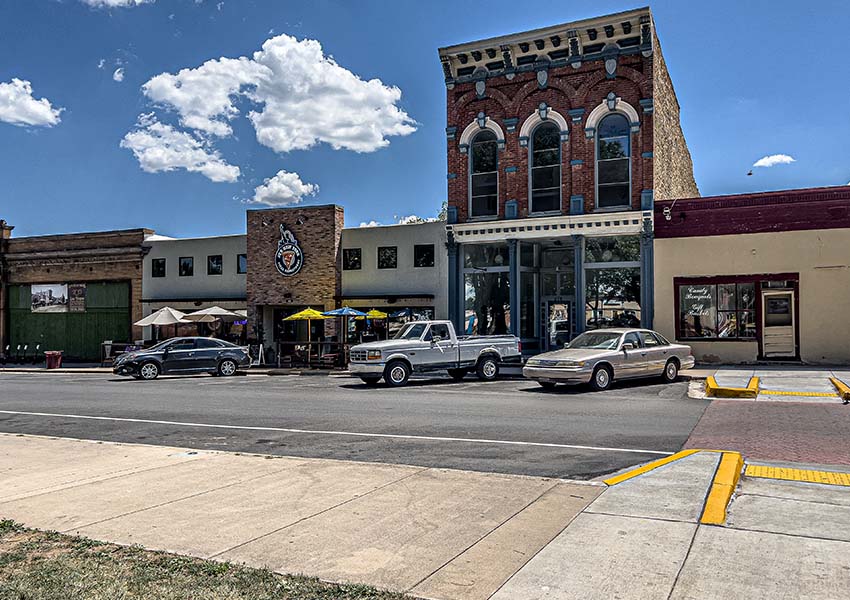

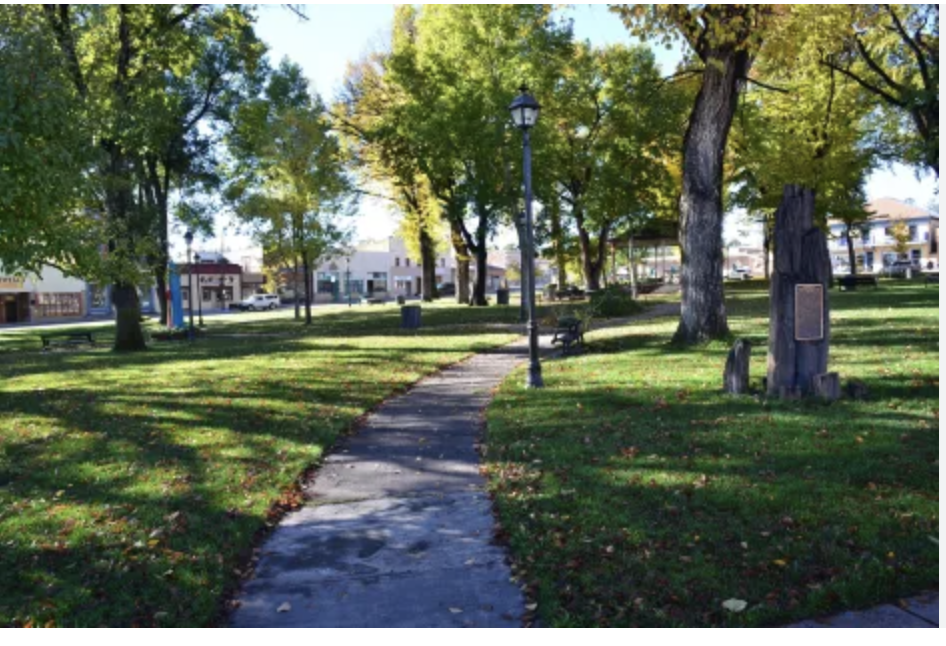
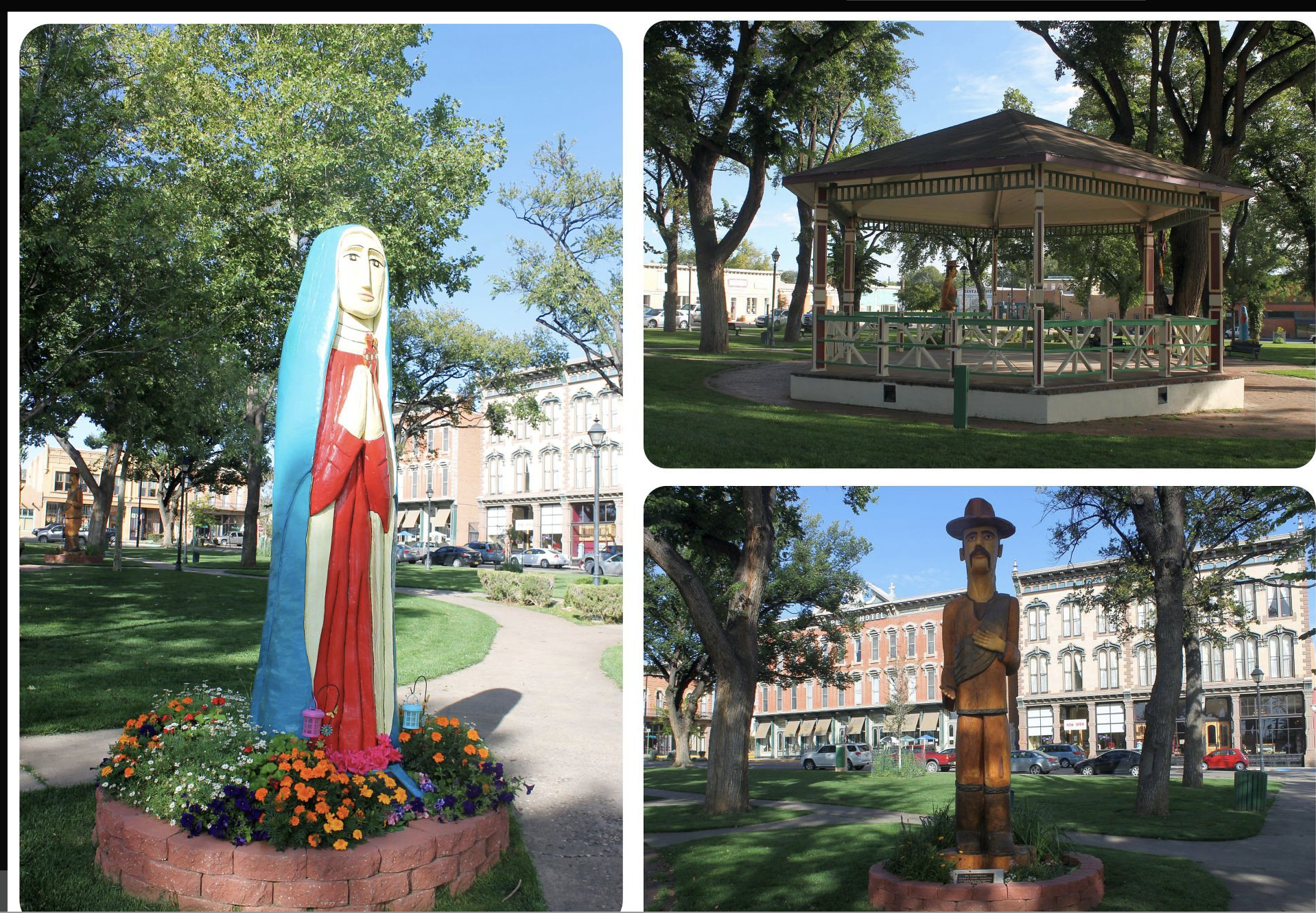
HISTORY OF MANIFESTATIONS
While it is not reported specifically who is haunting the park, there are many theories as to what spirits are restless, and wander around Las Vegas Park Plaza, perhaps finding some peace to counter their restlessness, mostly connected to how they passed.
People who have suffered a long, lingering death by an old fashioned hanging from a rope tied to a pole or tree, often are restless and stuck in the area where they died, especially if the punishment didn’t fit the crime, and came at the hands of a spontaneous mob.
The Hanging Tree, Placerville CA (Vigilantes would hang men deemed to be criminals, sometimes after beating them, causing some restless and angry spirits).
The Whaley House, CA (This home was built on the old 1800s San Diego hanging gallows. A tall cowboy, Yankee Jim, was the leader of a gang that caused trouble. While members of his crew were sent to prison, he was given the death sentence, and suffered a bad hanging where he strangled to death. His spirit protested his sentence and torturous death until he started to enjoy the pretty docents and forgot most of his anger. While it is thought that he was able to leave, and just visit, a more negative spirit has taken his place (The Holster Files Paranormal Show).
Toughnut and First Street, Tombstone, AZ (After being hung by an angry mob, the spirit of disgraced lawman, John Heath, got his payback by having fun scaring the living in playful ways).
Las Vegas Park Plaza, NM (During the 1800s, the condemned were hung from the old well tower, sometimes by vigilantes. Many were not prepared to die, are restless because of the way they died, and still want to be in their old lives).
When people are murdered, they sometimes want to find the person who took their lives or want the killer to suffer some consequences. Wild and wooly frontier towns saw a lot of murders, causing many restless spirits to want a rematch or justice.
Tombstone, AZ (The spirit of Henry Clanton is still looking for a rematch with the Wyatt Earp posse after being shot dead unexpectedly at the OK Corral).
Del Frisco Steak House, TX (A greed-motivated murder has caused an angry victim spirit, who cannot rest, and looks for his killer).
Palace Saloon and Restaurant, AZ (In 1884, prostitute Jennie Clark (aka Nellie Coyle) was stomped to death in the middle of the saloon by her gambling and opium-addicted lover, Fred Glove. No one stopped him. His death sentence was commuted to only five years in jail, causing her spirit to be angry).
Las Vegas Park Plaza, NM (The saloons that used to be around the plaza, had a lot of shootings over card games and hot tempered arguments in the early days of the town. Some spectral shooting victims may be looking for their killers as well).
People on their way to accomplish a goal or journey who are suddenly killed or die naturally, sometimes don’t want to admit that they are in spirit form, and want to continue on their life paths.
Castaneda Inn, NM (A train passenger who was on his way to San Diego, CA died at the inn, and is still making plans to catch his train while drinking in the bar).
Albany State Capitol, NY (The spirit of the security watchman Samuel Abbott died in a fire while getting others to safety. He continues with his duties, not willing to give up his state service work).
Cleveland Grays Armory Museum, OH (Two people died suddenly in this building and both spirits make themselves known today. One of the original 1893 construction workers died in an accident. Also, a long-time caretaker had a heart attack right in the middle of the first floor Drill Hall/Ballroom).
Las Vegas Park Plaza, NM (Spirits of travelers who unexpectedly died in or around old town Las Vegas, still wander around looking for ways to continue on their planned journey).
Spirits of military personnel who pass away while serving, often want to continue to stay in their assigned military unit.
Fort Ticonderoga, NY (Apparently, being dead doesn’t excuse spirits of soldiers from reporting for duties they still care about doing).
Fort Stanwix, NY (Apparently, many spirits are still attached to the land. These land-attached spirits have moved into the reconstructed fort buildings).
Fort Abercrombie, ND (There is an intelligent spirit or two here as well, attached to the main guardhouse headquarters, and the blockhouse).
Las Vegas Park Plaza, NM (Spirits of soldiers who camped in the plaza during the Mexican American War are still there, waiting for orders).
MANIFESTATIONS
Though not much in the way of specific paranormal activity has been reported, the following manifestations may be taking place, based on other haunted houses.com sites where spirits have moved into familiar buildings or spaces.
Personal Appearances
Apparitions, shadow people, perhaps some white or black mists, and maybe even some see-through apparitions have been noticed.
Neck-tie Victims
They may wander around the original location of the well windmill where they were hanged.
They are restless, and may want payback in some way, or are stuck in their emotions.
They may relive in their minds the events that led up to their hangings, trying to undo them.
Murder Victims
May be going from tree to tree, looking for their murderer.
They may also visit the stores that now stand on the ground where they were killed, looking to see if their killer was there.
Spirits not Ready to Move On
Disembodied voices of conversations may be heard.
Spirits of Travelers – They may be wandering around trying to find their horse to continue on their journey.
Spirits of Townspeople – They may find comfort in the Gazebo, remembering pleasant memories of their life in the town.
Spirits from 19th century soldiers – They may still be camping and reporting for duty, trying to ignore the fact that they are now in spirit form.
Spirits of 20th Century soldiers
They may find some peace looking at the memorials and flower beds, trying to forget their death traumas, suffered during WW 1 and WW 2.
New Mexican soldier units wound up in the WW 2 Theater of the Pacific, and died from the cruel Japanese treatment on the death march and torturous captivity.
Auditory Residual Energy
Perhaps the sounds of animals can still be heard.
Sounds of men camping may also be noticed.
Disembodied voices may still be going through their energy loops.
PARANORMAL FINDINGS
What is generally reported has been from witnesses who have experienced paranormal activity, mostly at night.
There is no hard evidence shared, just the personal experiences of the living.
STILL HAUNTED?
Probably so!
People still see paranormal activity in the Las Vegas Park Plaza, though some of it is probably residual. Intelligent spirits seem to be too well-mannered to disturb the existence of living people, and are content to go about on their own agendas, trying to find peace and make themselves feel better as they work through their personal life dramas.
LOCATION/ADDRESS
It is located in the central part of historic old town Las Vegas in the historic main square, between Gonzales Street to the east and Pacific Street to the West, and Valencia Street, 1/2 block to the north, and Moreno Street 1/2 block to the south in historic old town Las Vegas, New Mexico.
SOURCES INCLUDE
- https://npgallery.nps.gov/GetAsset/d763d45b-40cd-4228-b47d-8c9ab2e429b8







